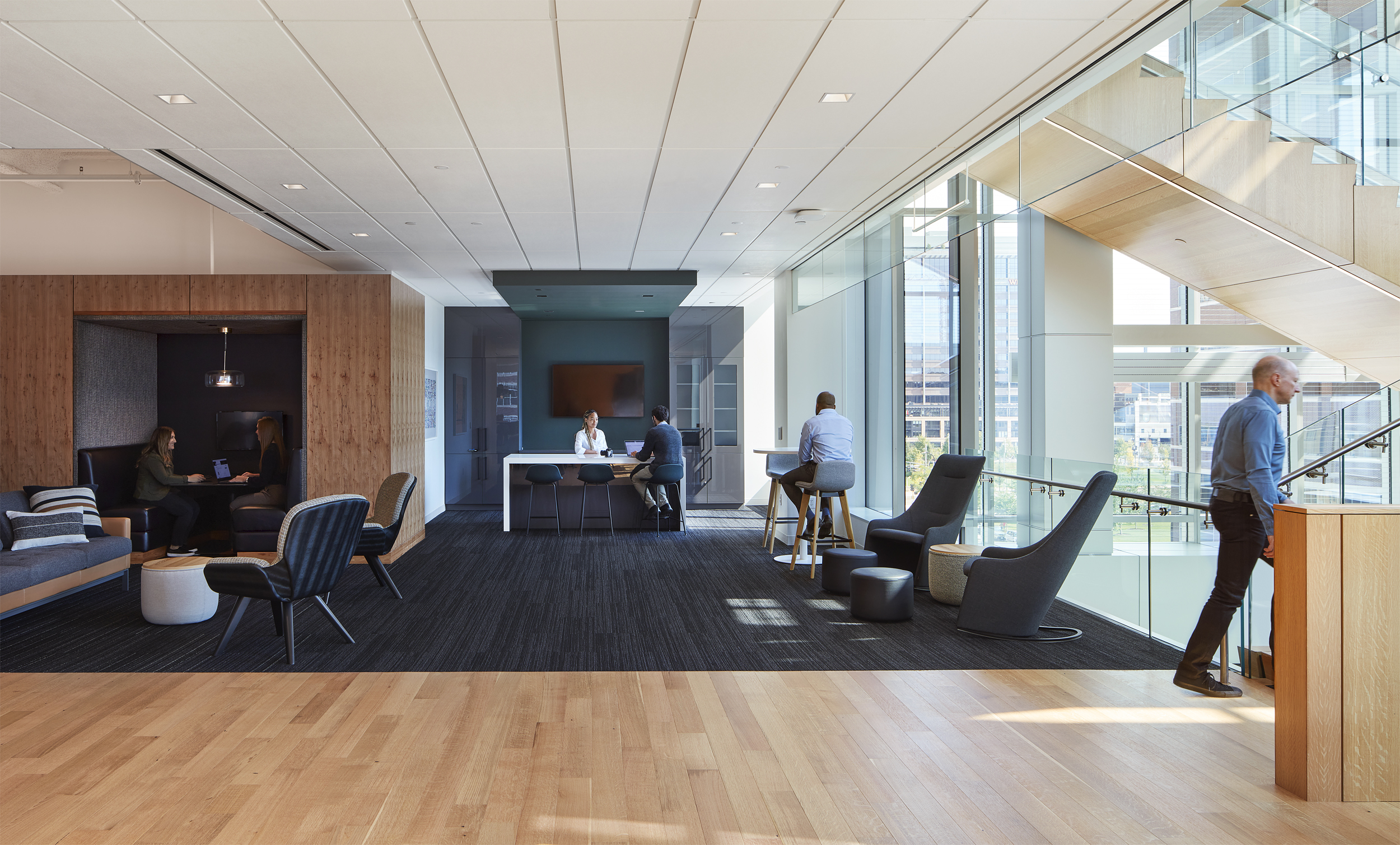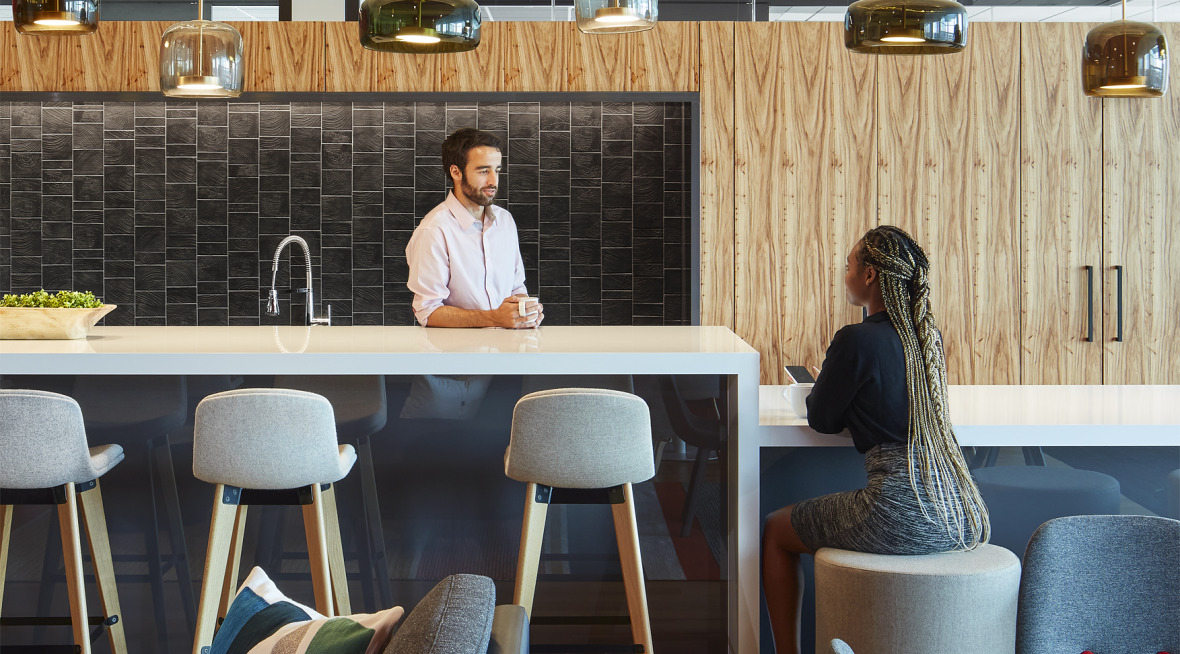The impact of a global pandemic on offices and urban centers has turned our industry nearly upside down. The combination of disrupted supply chains, vacant commercial real estate, and safety measures— like physical distancing— have left many wondering what the value of office space is anymore.
And rightly so.
With billions invested in real estate and maintenance of the workplace, companies would be missing something if they weren’t at least asking questions about its necessity.
Tracy Brower, Forbes
We advise our clients on the value of space and the impact it has on productivity, engagement and positive experiences. It’s our business to know the value of a well-designed and furnished workplace and how to optimize the client’s investment. So, we deeply appreciate the magnitude of the choices companies face as they navigate an uncertain economic future.
Our own journey this year took us through a work-from-home phase, and we quickly found that a strong technology strategy helped to enhance our business continuity capabilities. But while we kept in touch with each other and our clients using shared technology platforms, it became apparent that we needed human contact.
Through multiple client roundtables, we heard concerns, questions, and innovative ideas as we worked to explore solutions together.
We need each other, and we understand ourselves based on our relationships with others. We are coworkers, colleagues and team members. Being together in the office feeds this need for togetherness whether we’re working side-by-side creating a new idea at a white board, solving a thorny problem around a conference table or acknowledging a friend across the cafeteria.
Tracy Brower, Forbes
We also conducted a survey of our clients and partners in the design and real estate communities and feel that this particular response neatly sums up a common perspective.
I am probably more productive at home, but I miss the synergy between colleagues.
Survey response, August 2020
Workers who were able to work from home, or remotely outside of an office, dug in and made the most of it. Cloud computing, virtual private networks, and software companies bore the surge of activity and kept organizations operating largely at full capacity. For organizations whose team members were suddenly physically siloed, the impact to culture and creativity took a less noticeable hit.
But like anything that needs constant nurturing, these essential building blocks for growth and success are central to the workplace-value conversation. To that point, previous experiences with largescale, mandatory WFH programs show that the real problems don’t show up until after a year or so, as employee turnover begins to weaken the social networks that developed over years of in-person interaction.
As we reviewed our survey responses, there were clear answers to questions that we’ve all been wondering, resonating throughout.

What will draw workers back to the office?
We found multiple points of frustration in working from home that are more quickly solved in the office, such as a more stable environment and systems people can trust in, like internet connectivity. Realizing that these benefits were found within the office may not have been apparent pre-COVID-19, but with multiple family members and children at home during shutdowns, using shared internet connections suddenly became a real issue for many.
After reliable business tools and resources were addressed, the next universal need that we heard in our survey was clear— human interaction.
What does burnout look like? What does mental health look like? What does connectivity and community building look like? One of the things I feel is maybe we are burning some of the social capital we built up in this phase where we are all working remote. What’s the measure for that?
Satya Nadella, CEO, Microsoft
We need to remain connected, in any way possible. And we are eager for the conditions in which we can experience serendipitous moments with each other, spontaneous upbeat conversations, and hear comforting background chatter.
The Next Normal
What we found early on during the shutdown, and what our clients are still experiencing now, is that a 100% remote workforce is not a sustainable answer as initiatives impacted by collaboration, creativity and team management suffer. Even a partially remote workforce solution requires careful administration.
Avoiding the pitfalls of remote working requires thinking carefully about leadership and management in a hybrid virtual world. Interactions between leaders and teams provide an essential locus for creating the social cohesion and the unified hybrid virtual culture that organizations need in the next normal.
Creating a place that matters is in our DNA and we recognize the crucial significance that the office plays on culture, future business growth, team collaboration and resilience. Because this is our business, we also have a constant pulse on trends and insights into research from Steelcase and other industry leaders. Recent research shows strong information surrounding the need for place, including:
- 70% of employees are less productive at home than at work
- 80% of Generation Z and Millennial employees feel less connected to their coworkers since transitioning to work from home
- Of people who work from home all or most of the time, only 5% say they’ll stay at their company through their career
- 88-90% want to work in an office again
Competing in the Post-COVID Era, Steelcase
15 Reasons Why the Office Matters, Steelcase
In the Era of Remote Work, We Still Need Offices, Fast Company
As we look to the future and begin to build our business again, we need to work as efficiently as possible and for our Worklab to support our teams to best collaborate, innovate and drive business together.
Space matters.
Read the complete elemeant Fall issue
Photo credit: Fortune 500 Financial Services Organization | design by hga | photos by Corey Gaffer


